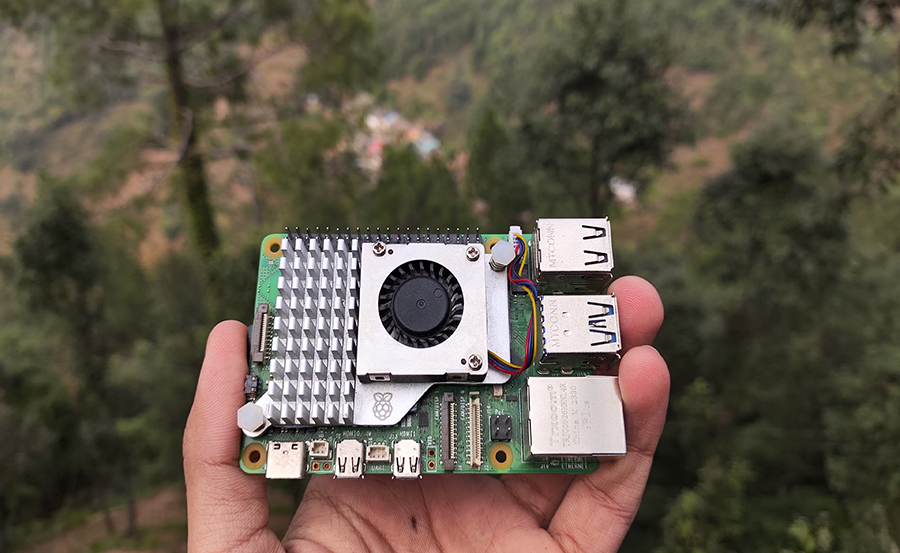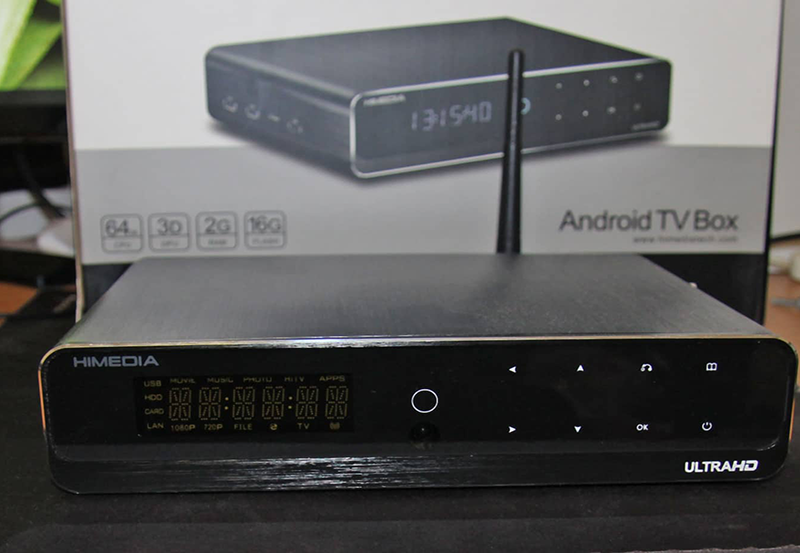In today’s digitally evolving landscape, the ability to monitor environmental conditions effectively stands as a major pivot point for businesses and enthusiasts alike. With the Raspberry Pi – a surprisingly versatile and cost-effective tool – this becomes a reality, opening new horizons in environmental monitoring. As we unfold this fascinating topic, we connect the dots between technology and environmental awareness, highlighting innovative ways to harness it. Join us on this journey as we bring to light the practices of monitoring environmental sensors using a Raspberry Pi, predicting trends, and investing in sustainable change.
Setting the Stage: Understanding Raspberry Pi and Its Capabilities
To venture into the world of environmental monitoring, one must first understand the building blocks, beginning with the Raspberry Pi. Often mistaken purely for a tech enthusiast’s toy, the Raspberry Pi is far more — it’s a powerful computing device capable of handling diverse tasks, including sensor monitoring. What makes it standout? Its inherent flexibility and the bridge it creates between modern technological needs and cost efficiency.
The Basics of Raspberry Pi
Initially launched as an educational tool, this credit-card-sized computer has evolved, allowing developers and tech-savvy individuals to implement it in various practical applications. With several models available, each brings new features to the table, making it essential to choose a model wisely, depending on the monitoring needs.
Expert Advice:
Subscribe to Best USA IPTV and access thousands of high-quality streams anytime, anywhere.
Understanding its basic components— like the processor, general-purpose input/output (GPIO) pins, and available interfaces—is pivotal. These elements form the foundation upon which environmental sensors can be effectively integrated, offering an interactive experience with the physical world through programming and connectivity.
Environmental Sensors and Their Importance
Before delving into integration specifics, it’s crucial to comprehend what environmental sensors are and why they matter. These small yet impactful devices are designed to detect and measure environmental properties such as temperature, humidity, light levels, and more. Their applications are varied and extensive, resonating deeply with industries aiming for operational efficiency, precision agriculture, and beyond.
Types of Environmental Sensors
The world of environmental sensors is vast, catering to wide-ranging needs. Common types include temperature sensors, humidity sensors, gas sensors, and light sensors. Each type offers unique benefits and application opportunities, ensuring comprehensive environmental data collection.
For instance, temperature sensors, which are often used to monitor climate conditions in agriculture or warehouse settings, help maintain an ideal environment for products or crops. Similarly, gas sensors find their place in safety measures, alerting users to changes in air quality that could indicate potential dangers.
Integrating Sensors with Raspberry Pi
Now that we’ve addressed the ‘what’ and ‘why’ of environmental sensors, it’s time to explore the ‘how’—how these sensors can be integrated with Raspberry Pi for real-time monitoring and data collection. This integration fundamentally transforms Raspberry Pi into a powerful tool for capturing and analyzing environmental data efficiently.
Choosing the Right Sensor
An essential step in the integration process is selecting the appropriate sensor for your application. This decision must take into account several factors, including the specific environmental metrics you need to measure, the precision required, and the budget available. With numerous sensors available, the Raspberry Pi community offers abundant resources to help make an informed choice.
Connecting Sensors to Raspberry Pi
Once the ideal sensors have been chosen, the next stage is connecting them physically to the Raspberry Pi. This typically involves using the GPIO pins available on the Pi, which allow it to interface seamlessly with various sensors. Through careful wiring and, sometimes, additional hardware like breadboards or wiring kits, sensors can be connected and configured to capture the intended data accurately.
Programming and Data Management
With hardware connections established, attention shifts to software. Programming the sensors via Raspberry Pi involves several languages, typically Python, due to its simplicity and extensive library support. This stage underscores the importance of coding in managing and interpreting the data collected from the sensors.
Basic Programming
Incorporating libraries such as ‘gpiozero’ or ‘Adafruit_DHT’ facilitates the communication with sensors. These libraries are specially designed to handle sensor input and ensure seamless data collection. Through structured programming, users can automate data collection, ensuring that the Raspberry Pi accurately records environmental conditions as required by the application.
Data Analysis and Visualization
Data collection marks the beginning of another critical aspect—analysis. Tools such as Matplotlib or Pandas may come in handy for visualizing data trends over time, helping users make informed decisions. A well-planned visualization strategy transforms raw data into meaningful insights, paving the way for actionable environmental management strategies.
Practical Applications: Real-World Uses of Raspberry Pi and Sensors
The integration of sensors with Raspberry Pi is not just theoretical. Real-world applications abound, showcasing its versatility and importance across sectors. Here’s a glimpse into some innovative uses that illuminate its impact far and wide.
Agriculture
In agriculture, environmental sensors play a transformative role by providing insights into farming conditions, which can lead to increased crop yields and efficient resource usage. Equipped with Raspberry Pi, farmers gain a robust tool for monitoring soil conditions, weather patterns, and more—collecting data that directly influences critical farming decisions.
Urban Development
Urban settings demand acute environmental awareness, where sensors combined with Raspberry Pi are pivotal. Whether controlling air quality, managing noise pollution, or ensuring water safety, these systems provide comprehensive reports vital for city planning and public health safety. This tech-driven insight supports sustainable development in rapidly growing urban landscapes.
Challenges and Solutions
While the benefits abound, nothing devoid of challenges. Monitoring environmental sensors using Raspberry Pi requires overcoming hurdles. Technical glitches, accuracy concerns, and data handling can present significant challenges.
Overcoming Technical Issues
Technical issues often arise from compatibility problems between different sensor types and the Raspberry Pi model. To mitigate such challenges, thorough research and understanding of the devices involved are necessary. Additionally, leveraging community forums can offer practical troubleshooting insights shared by other users.
Ensuring Data Accuracy
Accuracy in data collection is critical, particularly in environments where precision directly impacts decisions. Regular calibration of sensors, adherence to standardized procedures, and routine maintenance help underline accuracy. Potential errors can be preemptively addressed by maintaining a vigilant approach to sensor management.
Strategic Insights: Pushing Boundaries with Raspberry Pi
Pioneering environmental sensor monitoring with Raspberry Pi extends beyond just tech—it reflects an innovative thrust towards sustainability and technological responsiveness. This strategic essence caters to global needs, ensuring quality and efficiency alongside cutting-edge tech adoption.
Key Takeaways
Recognizing the blend of Raspberry Pi with environmental sensors uncovers significant opportunities across markets. This synthesis lays a cornerstone for practical, effective, and affordable environmental monitoring. As industries gravitate towards data-centric operations, leveraging such technologies establishes a formidable baseline for success.
The Path Forward
Looking ahead, the integrative potential of Raspberry Pi and environmental sensors seems limitless. Fueled by evolving technology and a deepened appreciation for environment sustainability, opportunities for innovation abound. Engagement in such technologies aligns businesses with a thoughtful, informed approach that not only addresses current demands but also anticipates future needs confidently.
Never Backing Down
In an ever-changing landscape filled with emerging technologies, challenges should never be seen as roadblocks but as stepping stones towards greater achievements. By inviting technological synergy into our environments with tools like Raspberry Pi, the step forward becomes more than an advance in technology; it becomes a hands-on revelation propelled by data, insights, and real-world application.
FAQs

To wrap up our exploration, let’s address some of the frequently asked questions about monitoring environmental sensors using a Raspberry Pi, shedding light on common inquiries and concerns faced by users.
-
How do I choose the right Raspberry Pi for environmental monitoring?
Choosing the right Raspberry Pi depends on your project needs. Consider factors like the number of sensors you plan to use, the complexity of the tasks, and network requirements. The Raspberry Pi 4 is an excellent option for advanced projects due to its processing power and memory.
-
Do I need programming skills to monitor sensors with Raspberry Pi?
While some programming knowledge is beneficial, Raspberry Pi projects often come with community guides and supportive documentation that guide beginners. Tools like Blockly can also help simplify coding through visual programming interfaces.
-
How can I ensure the accuracy of my environmental sensors?
Regularly calibrating your sensors and maintaining them according to manufacturer guidelines goes a long way in ensuring accuracy. Also, testing your setup periodically can prevent drift errors and other inaccuracies over time.
-
Can Raspberry Pi handle large volumes of data from multiple sensors?
Yes, but it might require additional setups such as using external storage or computing units, like a cloud service. Depending on the volume, tweaking your Raspberry Pi’s performance through optimization techniques may be necessary.
-
Is it cost-effective to use Raspberry Pi for sensor monitoring?
Absolutely. Raspberry Pi represents a low-cost investment compared to proprietary environmental monitoring systems. Given its expandability and community support, it offers a cost-effective solution tailored to both small-scale and expansive projects.
-
Are there alternatives to Raspberry Pi for environmental sensor monitoring?
While Raspberry Pi is popular, alternatives like Arduino or ESP32 are available, offering differing features and benefits. The choice often depends on project specifics such as size, power requirements, and desired programming languages.
How to Use ProgTV with Popular Plugins and Add-Ons





